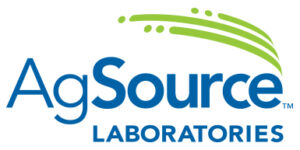Soil health is a critical but often overlooked component of watershed management. In Iowa communities, turf grass covers significant land area, but the soil beneath – especially in newer developments – is frequently disturbed and unhealthy. This compromised soil structure creates a cascade of watershed problems: reduced water infiltration, increased runoff, and more pollutants reaching local waterways.
The living foundation of watershed health
Healthy soil isn’t just dirt – it’s a complex living ecosystem containing billions of bacteria, fungi, and other microorganisms that work together to support plants and filter water. When functioning properly, soil:
- Absorbs and holds rainwater, reducing runoff and erosion
- Filters out pollutants before they reach streams and lakes
- Provides nutrients naturally, reducing the need for chemical fertilizers
- Supports resilient plant growth that requires less water and maintenance
This perspective represents a fundamental shift in how we view the connection between land management and water quality. By treating soil as a living system rather than an inert growing medium, we can address watershed issues at their source.

Urban lawn care for water quality
The Healthy Soils, Healthy Streams campaign connects everyday lawn care decisions to larger watershed outcomes. Rather than focusing solely on achieving green grass through fertilizer applications, this approach emphasizes building soil health first.
Simple practices make a significant difference:
- Adding organic matter to improve soil structure and water infiltration
- Testing soil before applying fertilizers to prevent over-application
- Using phosphorus-free fertilizers unless soil tests indicate a deficiency
- Maintaining buffer zones near water bodies where no fertilizers are applied
- Sweeping fertilizers off impervious surfaces like sidewalks and driveways
ISWEP is partnering with AgSource, a soil testing laboratory in Ellsworth, Iowa, to provide affordable soil testing services. After the sample is sent to the lab and analyzed the lab will provide you with an interpretation of the results and recommended fertilizer application rates.
Become an Urban Watershed Steward
Lawn care companies can become Urban Watershed Stewards by committing to water-quality focused practices:
- Providing soil testing services for clients before fertilization and adjusting application rates based on results
- Rechecking soils every three years to monitor changes
- Using only phosphorus-free fertilizers unless establishing new lawns or when soil tests indicate deficiency
- Sweeping excess fertilizer from hard surfaces to prevent it from washing into storm drains
- Maintaining buffer zones near water bodies where fertilizers aren’t applied
This approach recognizes that watershed health starts with individual actions on private property. By improving soil health in urban and suburban areas, we can reduce runoff, decrease pollution, and strengthen the resilience of Iowa’s watersheds from the ground up.
Want healthy lawns and streams?
Become an Urban Watershed Steward
Lawncare companies in Iowa can become recognized for their committment to water quality through this campaign. Lawncare companies can offer their clients the opportunity to assess their soil fertility prior to the application of fertilizers. ISWEP has partnered with AgSource Laboratories to test soils for a variety of components, such as nitrates and organic matter. Lawncare companies may want to use AgSource for testing samples or another laboratory that analyses soil samples for lawns.
Urban Watershed Stewards adhere to the following policies:
- Provide and conduct soil sampling services for your clients before fertilization. Adjust fertilization rates based on the results.
- Soils should be rechecked every 3 years.
- Use only phosphorus-free fertilizers unless establishing a new lawn or the soil testing results indicate that phosphorus is needed.
- Sweep up excess fertilizer from sidewalks, driveways and streets.
- Keep a buffer zone near water bodies and ponds where fertilizers are not spread.
